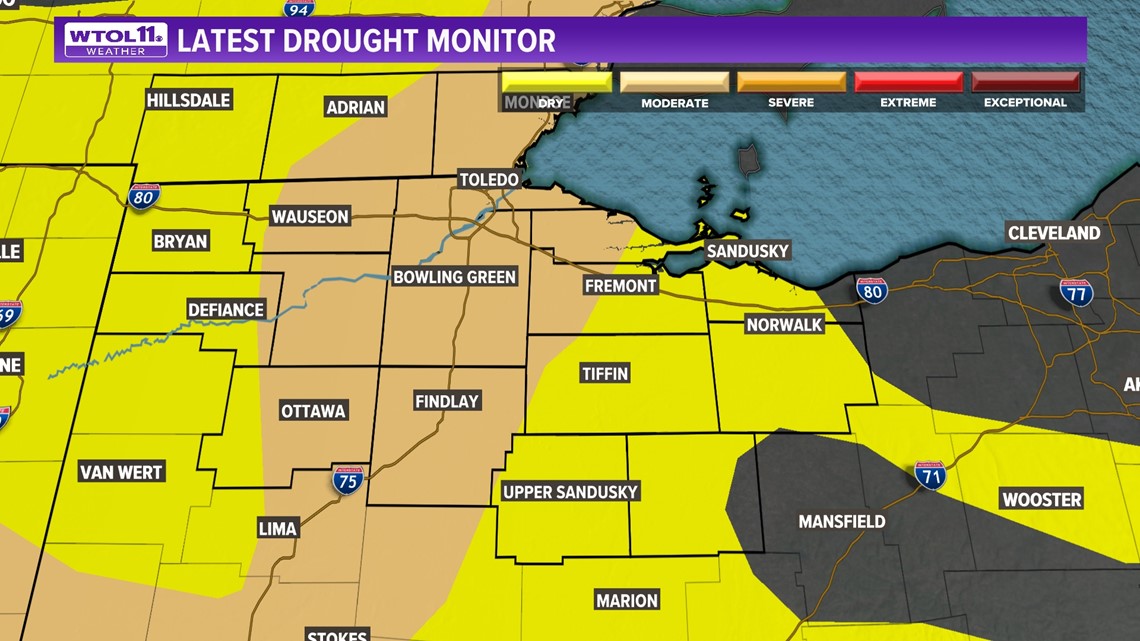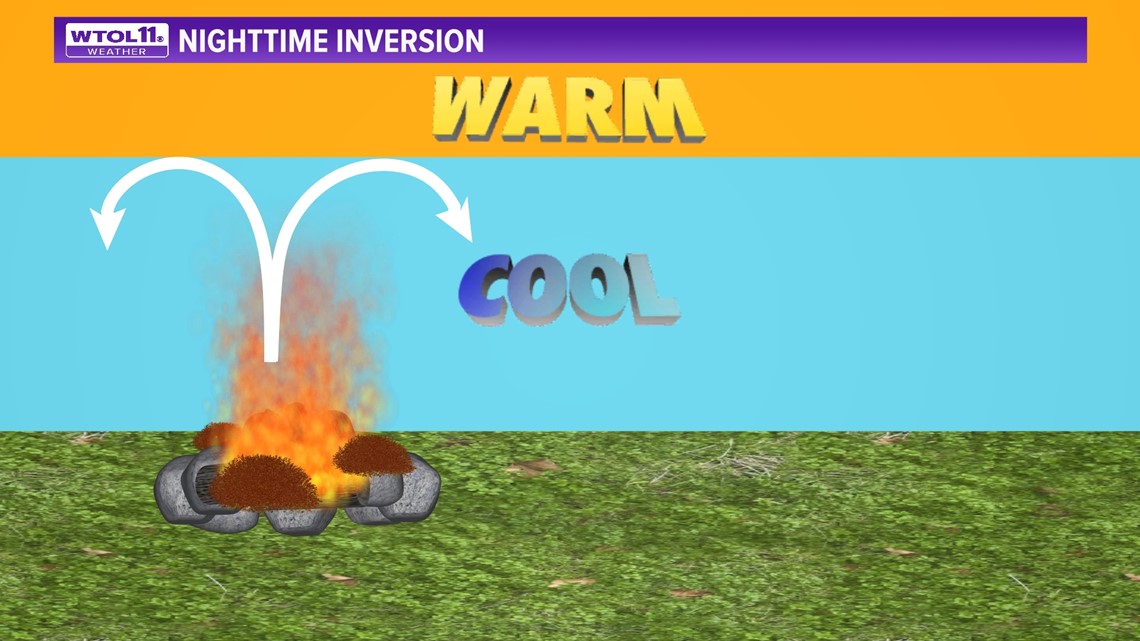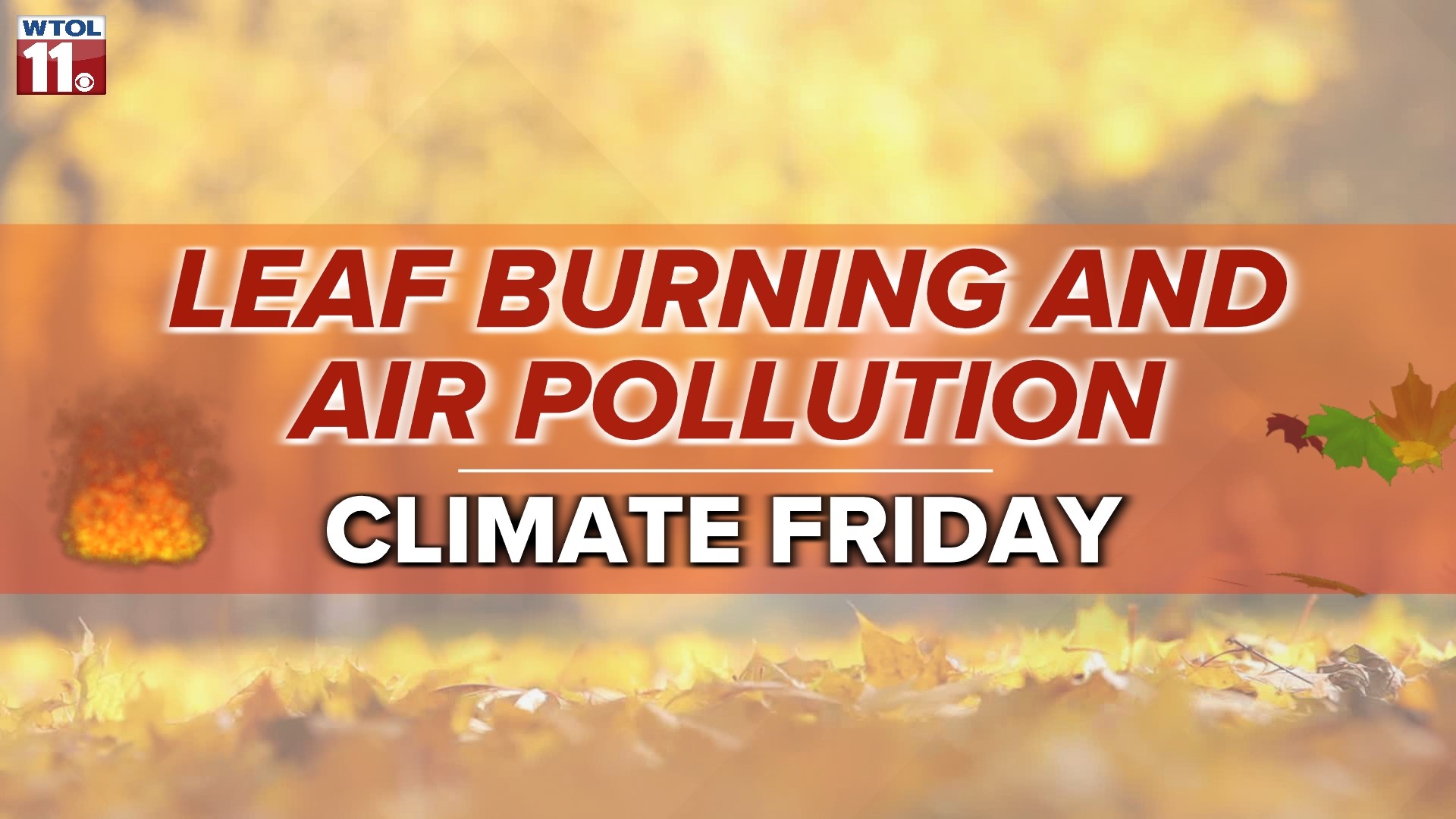TOLEDO, Ohio — November is here and most of the leaves have fallen off the trees, so now what?
Most municipalities offer leaf pickup for residents, but some individuals opt to burn leaves or compost them in their lawns. However leaf burning reduces air quality and increases the risk of fires.
In this week's edition of Climate Friday, we'll break down the impacts of leaf burning and let you know the best way to safely dispose of fall leaves.
Has the sky looked hazy lately? Have you noticed a burning scent in the evenings? Leaf burning reduces air quality, releasing chemicals and particulates into the atmosphere.
Burning leaves is one of the most significant contributors to urban air pollution, emitting hydrocarbons, carbon monoxide, and particulate matter. These byproducts of leaf burning are known carcinogens linked to health complications.
While most of these negative health consequences result from decades of exposure, some milder short-term symptoms include coughing, headaches, trouble breathing, and eye and nose irritation. Those who are most susceptible to these ailments include the elderly, unborn children, newborn infants, and individuals with health conditions, particularly respiratory problems.
Overall, leaf burning releases dangerous emissions, increasing the risk of health complications in the community.
Leaf burning also elevates the risk of fires, especially during dry fall weather. Much of northwest Ohio and southeast Michigan is currently under a moderate drought level due to persistent lack of rainfall.


In particular, areas from Detroit and Monroe down through Toledo and Bowling Green and further south to Ottawa and Findlay have experienced a noteworthy rainfall deficit.
If you choose to burn leaves, pick a humid day with calm winds. These weather conditions reduce the risk of man-made fires. If you opt to burn leaves, avoid the evening hours after dark.
The evening hours create weather conditions that trap smoke near the Earth's surface. After dark, an inversion develops, meaning the air gets warmer with height in the atmosphere. In other words, cool air is trapped near the Earth's surface beneath warmer air aloft.
Smoke released from leaf burning in the evening remains close to ground level, reducing air quality. Burning during the afternoon hours allows more smoke to dissipate into the upper levels of the atmosphere.


While leaf burning is illegal in many municipalities, some areas allow it and many folks still choose to burn.
So how can you burn leaves more safely? Choose a muggier day with higher relative humidity. Burn leaves after a recent rainfall when moisture on the surrounding grass and trees will prevent the spread of wildfires.
Calm winds reduce the chances of wildfire spread, but gusty winds spread fires more rapidly.
What are some safer alternatives to burning leaves? Leaf pickup is a great service provided by most cities. Placing your leaves on the curb for pickup provides a safe method of leaf disposal. Just make sure they don't fall into the sewer drains, as the nutrients from the leaves can flow into bodies of water including area rivers and Lake Erie.
While leaf disposal is a great way to safely get rid of fall leaves, other options to recycle leaves may be more up your alley. Composting and mulching leaves provide natural fertilizer for your lawn. Better yet, fall leaves are free, so you can save money on fertilizer costs.
In summary, leaf burning releases air pollution that causes health complications and increases the risk of fires. Other alternatives to leaf burning provide simple, convenient, inexpensive ways to dispose of fall leaves.
Check with WTOL 11 for the latest list of leaf pickup times. Click here for information on Toledo's leaf collection program.
RELATED VIDEO

